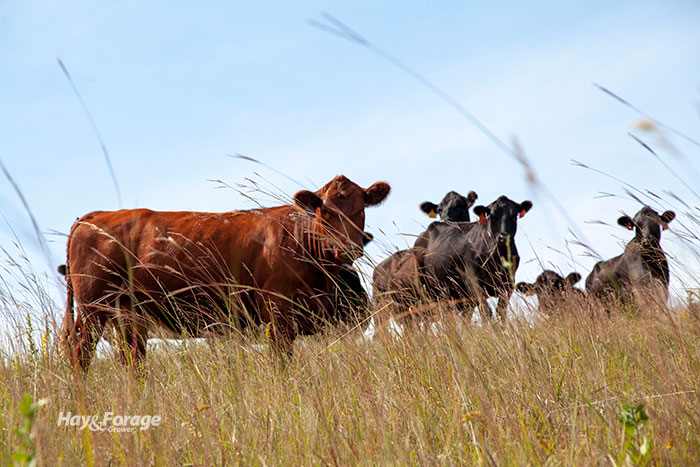
Looking into your crystal ball to predict future forage grassland productivity is difficult at best. Yet, such a prediction is needed to adequately stock pastures and know when the right time is to move livestock.
A collaborative effort between USDA’s Agricultural Research Service (ARS), other Federal agencies, and several universities has resulted in the development of Grass-Cast, a grassland productivity model for the Northern and Southern Plains. It will soon expand into New Mexico and Arizona.
Grass-Cast also will now be providing forecasts for individual 6-mile by 6-mile areas, rather than the county-by-county results available previously.
During the 2019 season, the Grass-Cast website was visited nearly 3,000 times by over 1,800 different users.
Grass-Cast uses over 30 years of historical data about weather and vegetation growth and then combines that with seasonal precipitation forecasts to indicate whether grasslands are likely to produce above normal, normal, or below normal amounts of vegetation.
According to a USDA-ARS news release, the first Grass-Cast maps for the 2020 season were released in mid-April and will be updated every two weeks until the end of August to incorporate newly observed weather data. Grass-Cast becomes more accurate as the growing season progresses, so it’s beneficial to consult the maps on a regular basis. The tool is most popular in May and June; this is when the risk of drought might prompt the selling of yearlings or older cows. It can also help indicate whether calves should be weaned early, if more supplemental feed will be needed, or if livestock can be moved to areas where grass is more plentiful.
There are some limitations of Grass-Cast. It cannot tell the difference between desirable and undesirable forage species, so ranchers need to know what proportion of their pastures are weedy, and how those weeds will respond to more or less rain. Developers also encourage users to combine the forecasts with their knowledge of local soils, plant communities, topography, management history, and other conditions that affect vulnerability to drought.
The Grass-Cast website provides tutorial videos, printable handouts, scientific papers, and other features. It can be accessed here.

